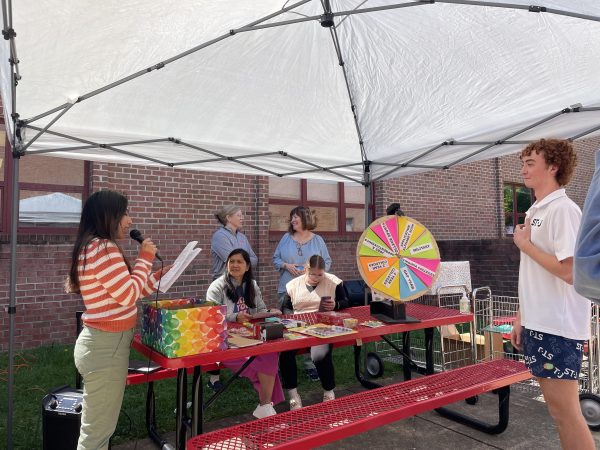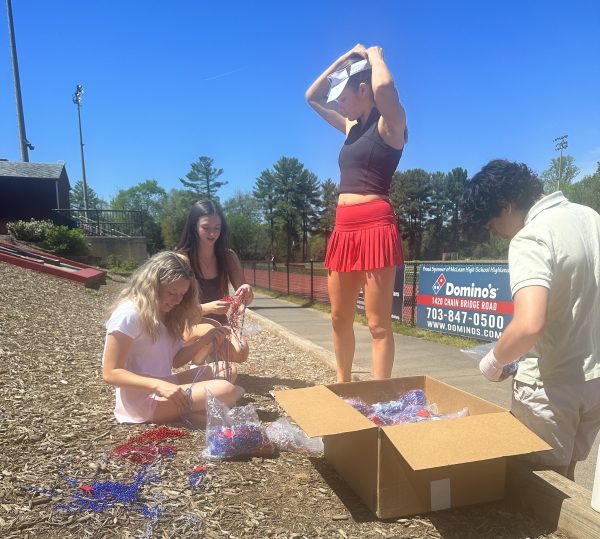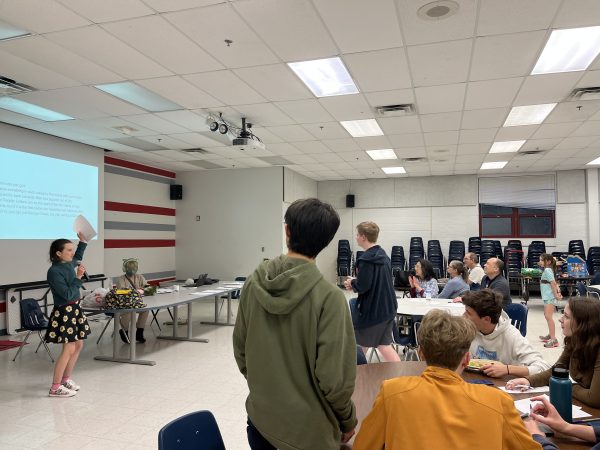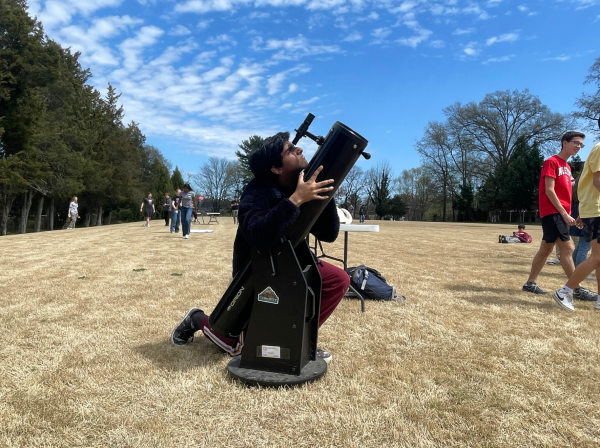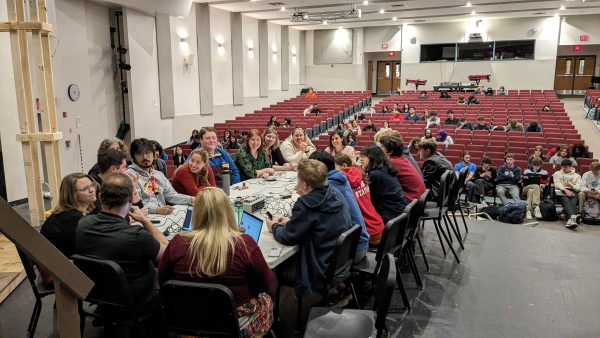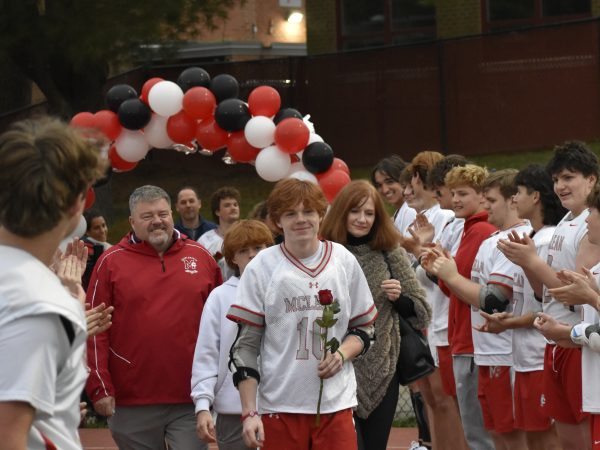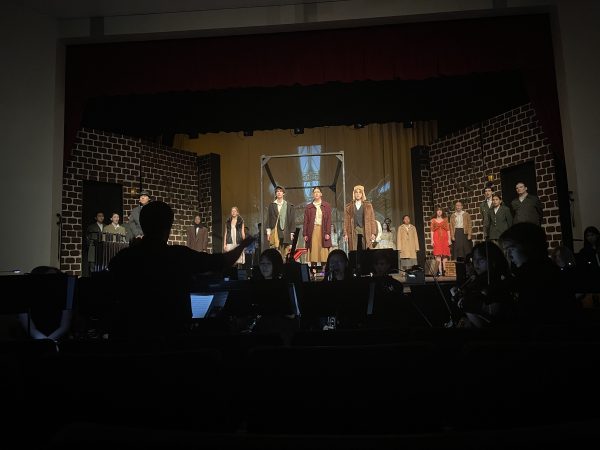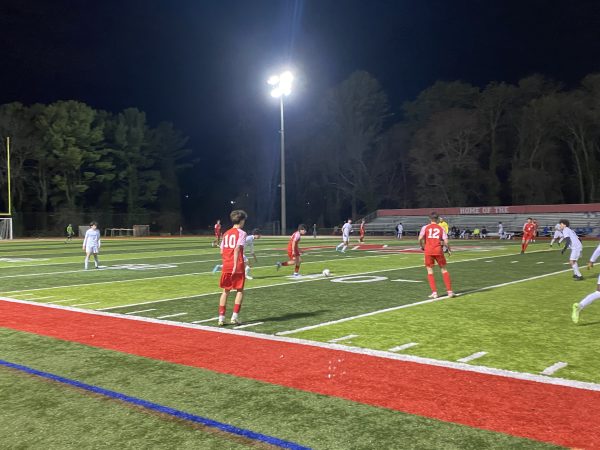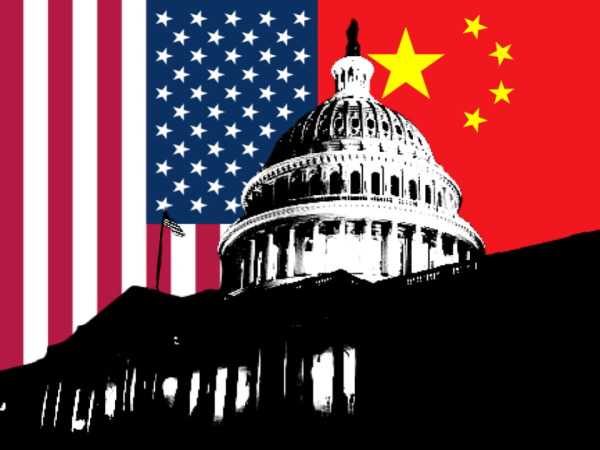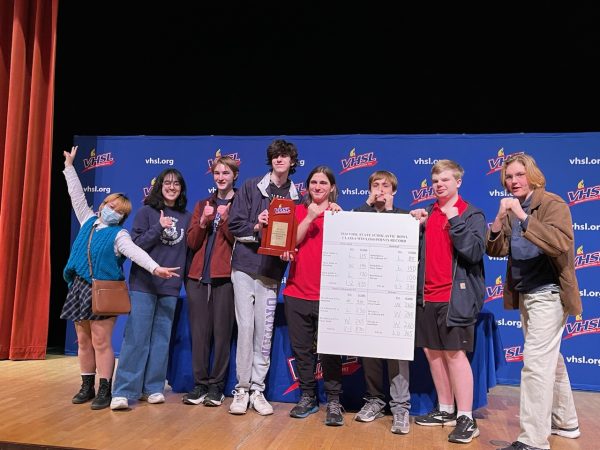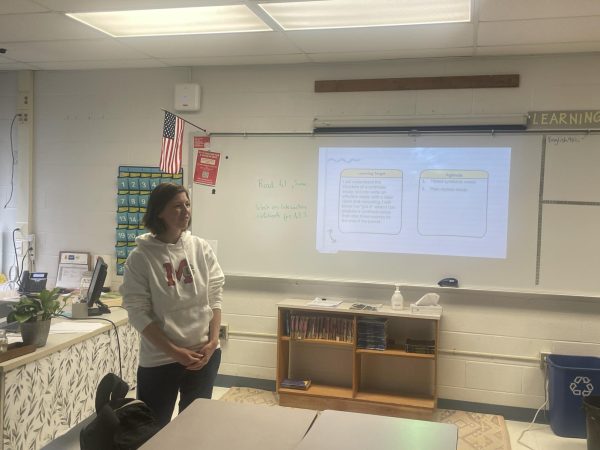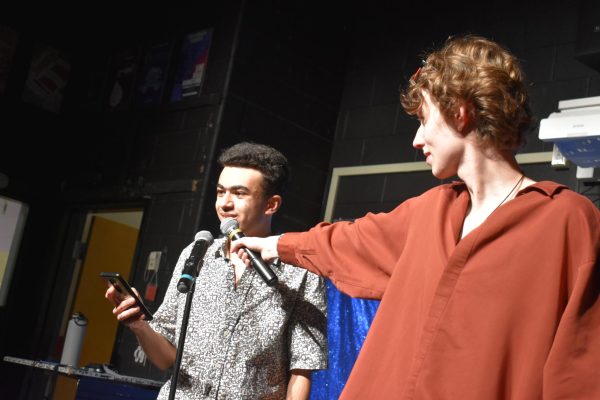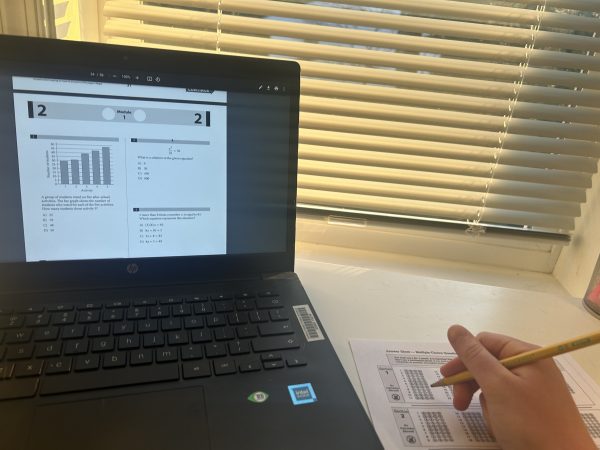Q&A with U.S. Surgeon General Jerome Adams
Dr. Adams discusses precautions and outlooks for fall in May 27 interview
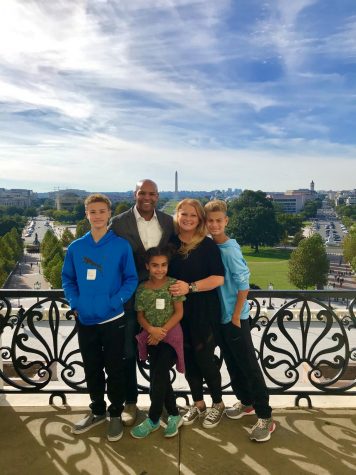
THE HIGHLANDER: In the D.C. area, what’s the greatest threat that the virus still poses?
DR. ADAMS: I think that there are a couple of threats in the area. We know that D.C., Maryland and Virginia are the three leading areas, and the DMV area overall is the leading area in the country in terms of cases. Most everywhere else, outside of small outbreaks and clusters, is trending down, but we’ve just been surprised at, quite frankly, how resistant the DMV has been to leveling off. We still are trying to figure out why that is.
We know a lot of it is related to the fact that we have many essential workers in our area. So when you talk about the coronavirus response, the stay-at-home orders don’t apply to essential workers: Metro drivers, in many cases public safety and law enforcement, and you’ve got a lot more with the FBI and the Secret Service and people from a public safety point of view. Military—you’ve got the Pentagon and you’ve got a lot of military bases around here. We’ve got a lot of people who are in the essential category who are coming and going, more so in this area. We also are just an area where a lot of people come in and out from the rest of the country. People are flying into Washington, D.C., for meetings. They’re flying back home. So it’s a place that is ripe for importation of new cases of coronavirus.
It’s critically important that we’re aware of our data, that we are particularly aware of how we can protect ourselves and that we are vigilant about doing the things that we know will keep ourselves and our communities safe and slow the spread.
THE HIGHLANDER: What should residents in the DMV area be aware of?
DR. ADAMS: In every area we go to, in every area we speak with, we tell them one of the most important things to do is to know what the local burden of disease is in your community. You’re going to react differently if you are in an area where there are lots of cases versus if you’re in an area where there is very minimal spread. So it is important for everyone to really think about and to go to their state department of health and their local health department websites.
I know in the Virginia area, you’ve got the Virginia Department of Health website. D.C. has the D.C. Department of Health website, Maryland has the Maryland Department of Health website, all of which talk about their cases, hospitalizations, their death rates and whether they’re trending up or trending down.
I would reiterate that it’s important that people know that the D.C., Maryland and Virginia areas are actually worse than the national average. And so if you’re listening to CNN or NBC or Fox News and you hear that things are trending down, it’s important for us in this area to know that we are on the wrong side of those national averages at the moment.
THE HIGHLANDER: Do you have any concerns because Virginia is starting to reopen? Do you have any concerns about this particular area of reopening in the state?
DR. ADAMS: I do have concerns when you look at the data. And I think that the advice I would give to people is to look at the guidelines for reopening America that are at https://www.whitehouse.gov/openingamerica/. They really talk about gating criteria. Gating criteria is what we on the task force have set up to help people understand the criteria you need to meet to safely reopen. We want to see a downward trend in cases—we don’t want people reopening if case counts are going up. We want people to have hospital capacity, so that if they do see new cases, they have the ability to take care of these people without denying them a ventilator or denying them a bed. We also want to make sure they have the public health capacity to be able to test people and to be able to do case contact tracing, which is where we send someone to your house or to call you up and to ask you, if you’ve tested positive, all the places you’ve been, so that we can then let other people who can come in contact with know that they may be at risk and then get them tested. That’s the way they contain the disease.
It is critically important in the Virginia area, especially, that we make sure—but in all areas—that we are following those gating criteria and that we’re progressing in a phased manner. It’s not a light switch. It’s not one day you’re closed and the next day you’re open. It’s how do we gradually reopen in a data-driven and evidence-based way so that we protect as many people as possible as we reopen our country?
THE HIGHLANDER: Under what conditions do you think schools will open? Do you think it will happen by fall?
DR. ADAMS: I think schools will reopen in the fall in most places in the country. That’s just my personal opinion. I think it’s important that we think through how we make that happen. There is a concept that your teacher will know called the summer slide. We’ve seen that during the summertime, in many cases, people really fall back from the educational levels that they were at. This accounts for a lot of the disparities between rich and poor, between minorities and whites, between advantaged and disadvantaged in terms of educational attainment.
We know it’s important that kids are in school for other reasons. There’s socialization that occurs, and it helps protect your mental health. We know that when students are home in many cases, they may not be under adult supervision, and they can get into some unfortunate activities. So there are protective measures and protective things about being in school, but we want to make sure when we reopen school, we do it safely.
A couple things that are going to be key. We have to make sure we protect the people who are most vulnerable. So even when schools reopen, you still may see people who have diseases—cancer, leukemia, people who have Type 1 diabetes, people who have other medical conditions—may not be able to go back to school right away until we have a vaccine or until we can find other ways to protect them. We want to make sure we’re acknowledging the public health tenet of physical and social distancing. We don’t want everyone crowded together in a tight space that is likely to spread coronavirus. We want to make sure we have the opportunity for people to practice good hygiene. So you’re going to see a whole lot more hand sanitizer, you’re going to probably see frequent times set up for people to go into the bathroom and wash their hands.
We may even see staggered school. Many places have already put into place plans where instead of everyone coming back to school all at once, on Monday, Wednesday and Friday, Group A goes to school, and on Tuesday, Thursday and Saturday—and yes, there are some places that are looking at Saturday school, too—you will have Group B go to school. That will better allow for social distancing.
I do think school will open in the fall in most places. I don’t think it will look, in most places, like school traditionally has looked for us. But I do think we’ll gradually work our way back to normal with social distancing, with good hygiene and by protecting the vulnerable. One of the other concerns that we have is that it’s one thing to acknowledge that young people actually are much lower risk for coronavirus than older people, but it’s a very different topic of discussion to consider the fact that many of our teachers who have to be there and teach actually fall into the at-risk categories in terms of being older and in terms of having chronic medical conditions. So it’s not just about the students—it’s about everyone who has to be there for reopening the school, including your cafeteria workers, the security officers, your custodians, your teachers. We have to make sure it’s a safe environment for all of them too.
THE HIGHLANDER: Because schools like McLean and others in the DMV are overcrowded, in addition to staggering students or groups, what else should the school implement to protect everyone who attends?
DR. ADAMS: Again, there is going to be a combination of staggered, and that may mean we have to look at weekend school. It may mean we have to look at extended hours of school starting earlier, which is going to be tough for teenagers who already have trouble getting up, or maybe going to school later, having some people go to school for a half a day in the morning and having the other people come to school for half a day in the afternoon.
There are different ways you can create that stagger. I think it’s going to force us to look comprehensively and on a larger level at the overcrowding that is taking place in many schools across our country and to ask whether or not there are things we can do to alleviate that overcrowding, because that has implications for coronavirus, but it also has implications for the learning environment. We’re just now seeing how concentrated many of these schools are, how crowded many of these schools are. I think you’re also going to see people really leveraging online learning in a way that we never have before. Some of that’s not going to go away. Because in many cases, I think students—some students—will learn more efficiently or better than on traditional schedules to get through the immediate COVID response, but also in the long term to help alleviate some of the problems of overcrowding we see.
THE HIGHLANDER: When schools open, in terms of the classroom environment and extracurricular activities, what will schools have to do? What will be different?
DR. ADAMS: Well, extracurricular activities are going to be tough, because everything that we do in life has a risk and a benefit. Literally from breathing the air, which may or may not be contaminated with substances, to drinking water. If you drink too much water, it actually can kill you. From a medical perspective, there’s a medical syndrome called polydipsia where people, oftentimes people with brain tumors, will drink too much water, and that can throw your body’s chemical balance off and cause you to die. So literally everything has a risk and a benefit ratio.
As a parent, I definitely see the benefit of my child going to school, so I am more likely to embrace that risk-benefit ratio, but it starts to get harder to make the case that your kid has to play football, or that your kid has to be part of chess club, or that your kid has to be part of this extracurricular activity that by definition is not something that everyone has to do. I think there’s going to be a higher threshold for us really engaging in some of these activities.
When you look at sports, it’s impossible to play football while practicing social or physical distancing. So that may be a scenario where you say we have to test everyone before they’re allowed to participate in an activity where they’re not going to be able to respect social distancing or where they’re going to be very close to one another. I’ve been talking to the NBA, to Major League Baseball, to other sporting leagues and helping them think through what it looks like for them to reopen. The good news is we’ll be able to look at some of their models before the fall and to really say, OK, well, the NBA, was successfully able to reinstitute basketball and the NFL was able to successfully reinstitute football by doing these certain things, and then figuring out how much of them we can apply to extracurricular activities, particularly sporting activities, in schools.
You’re going to see some open sooner than others. Tennis is an activity that you can play while exercising social distancing, especially when you take other precautions. Cross country may be something that we can continue to do. You may just see a world where people are actually out there running in staggered starts and not really running directly competing against one another, but running for times, but you still can do cross country. I think there are ways to do it. I think it’s going to be different for each and every extracurricular activity, looking at risk and benefit, looking at precautions and looking at other models out there, but we’ll gradually start to reopen them just as we reopen school.
THE HIGHLANDER: What precautions do you think students and teachers will have to take, like wearing masks and things like that?
DR. ADAMS: The things we know about coronavirus still exist. Even though cases are trending down, this is still a contagious disease. This is a disease that can be deadly, particularly to the vulnerable. So it’s going to be important that until we get a vaccine that we know works and that people are actually utilizing, that we continue to practice social distancing, whenever possible, that we continue to encourage people to wear face coverings when they can’t practice social distancing. So I think you will see in many environments, people wearing masks and face coverings. I think hygiene is going to be critically important. There’s going to be hand sanitizer, a big bottle of hand sanitizer in every room. It’s going to be important that people continue to do that. There’s going to be more attention to cleaning surfaces, and it’s going to be important that we clean desks and clean doorknobs, that we clean handles and frequently touched surfaces a lot more than we have in the past.
The good news for schools is you’re going to see workplaces start to reopen and take some of these precautions. We’re going to see sporting leagues reopen and start to take some of these precautions. There are going to be templates out there that people see have been effective in other environments that then they will be able to apply to schools reopening in the fall.
THE HIGHLANDER: Under what circumstances would you be comfortable letting your children go to school?
DR. ADAMS: That is tough to say right now. I think, first of all, we’re going to need to understand that we live in a community and that our kids are going to school in a community where coronavirus cases are definitely trending down. Part of the reason we closed schools is because we were worried that we were on an uptick, and when you’re on an uptick, a school environment is an environment that is certainly more conducive to spreading the disease than people being at home. So one part of this is going to be looking at the burden of disease and making sure things are trending down. Another part of this is going to be me as a parent feeling comfortable that the school is taking appropriate precautions to protect my child and other children. So again looking at what are they doing to allow for social distancing? What are they doing to allow for proper hygiene? Are they going to have people wear face coverings in environments where they’re not able to practice social distancing? What are they doing to test people so that they understand whether or not they’ve got an uptick in cases? And then what are they going to do, most importantly, to let parents know if there is a case that they found at school?
Again there are templates for this. If a child at school is diagnosed with meningitis, and this has happened before at McLean, then we have protocols in place, and schools have protocols in place, for saying OK, who has this person been around? And how do we alert the central contacts and their parents that their child may be at risk for this and may need to go in and see their doctor? So it’s not impossible for us to get there. We just all need to sit down and think intelligently through how we do this in a way that protects people.
THE HIGHLANDER: From a psychological standpoint, how can quarantining negatively affect a child’s or teenager’s mental health? What should people do to ensure they can cope with stress?
DR. ADAMS: I am very worried as Surgeon General about the impact of social distancing on mental health. I’ve said frequently on my social media accounts and in commercials that social distancing doesn’t have to mean social isolation. What do I mean? We have plenty of ways to digitally connect. You’ve got FaceTime, Skype, Zoom—you can have Zoom parties—and there are ways that people can continue to stay connected. We’ve said even before COVID-19 that if you have a friend or a colleague or someone at school who you are worried about or who you see as withdrawing, that it’s important that you reach out to them or that you let an adult know.
I would say to the students of McLean that now it’s more important than ever that you reach out to your friends through digital means or through virtual means and let them know that you’re thinking about them and that you care about them. It’s also important to try to have some semblance of a routine. Many people complain about school, but that said, it’s good for them to know that at seven o’clock in the morning, I have to be at the bus stop. And at eight o’clock in the morning, I’ve got a class, and at four o’clock in the afternoon, I’m going to be done or I have practice. So it’s important to try to have some semblance of a routine. It’s important to get physical activity. Physical activity actually helps a lot of people deal with stress and also helps people alleviate boredom. Whether it’s going out for a run or a walk or a hike—properly socially distanced—or going out and shooting hoops—again, properly, socially distanced—in your front yard if you’ve got a basketball court or at the local court by yourself, these are all ways people can get out and be active. You can do push ups or sit ups at home. Again, all these things are good not just for your physical health, but also for your mental health.
It’s also important to avoid substances. I say that to you all knowing that they’re illegal and you shouldn’t be using them anyway but that a lot of people are. When you look at Juuling and vaping, it is very important to understand that that has a negative impact on you in the best of times and, particularly when you’re isolated, can affect your mental health. Drinking alcohol is definitely something that young people should avoid. Marijuana, we know, is becoming more and more commonplace, and it’s important that people avoid that. We were dealing with, before COVID hit us, with EVALI, the vaping-related lung injury cases that were affecting young people across our country. That also can have a negative impact on your mental health and increase feelings of isolation, of anxiety, of depression. So these are all things people can do to protect their mental health.
If you have concerns, I would tell people about the helpline 1-800-273-TALK, the national helpline available for anyone, anytime, 24/7, that feel like they want to talk to someone, or if they’re feeling like they’re hurting themselves or depressed or just want to know about more resources that are out there.
THE HIGHLANDER: Many businesses, both local and national, are struggling because of a strong decline in demand for goods and services. How long do you think businesses will need to hold out until demand and consumer spending increases? And what can businesses do to facilitate safe reopening?
DR. ADAMS: Those are great questions. What is interesting is every tragedy or crisis also brings opportunity for some groups to meet a need. The Zoom meeting that we’re having—Zoom has become very popular because of this COVID crisis. So thinking through how businesses can leverage digital technology to stay in touch with people, and places that do that will be more successful. We’ve seen home delivery services, Uber Eats and Doordash, really pick up throughout all this. The restaurants that have been able to stay afloat are the ones that very early and very quickly transitioned over to delivery services, utilizing these delivery apps to be able to reach out to people.
So I think that the economy will really depend on how people adapt to this new world and how they evolve to meet new needs. There are a lot of people who are suffering, but there are a lot of people who have become millionaires and billionaires in the midst of this COVID crisis, because they’ve adapted to be able to meet an acute need.
I think that the more people focus on doing the things that we know protect us from coronavirus—again, social distancing, good hygiene, listening to your public health experts—the sooner we’ll be able to reopen. That’s the conundrum that we have right now: the more people don’t pay attention to what we’re recommending, the more difficulty we will ultimately have in reopening and staying open. It’s going to take that balance between making sure we’re doing the right things from a health perspective but also making sure we are trying to work towards reopening in more places. Many restaurants, many businesses are going to have to do the same thing schools are going to have to do in terms of protecting their clients, their customers to give them the confidence to come back because if you reopen, but nobody wants to come, then you still aren’t going to be making any money.
I actually think, as we reopen, we will see many businesses come back and we will see many new businesses that have been formed that will do quite well. We will unfortunately see some businesses that won’t come back. My hope is that for the businesses that don’t come back, their employees and their owners will be able to transition into a new business or a new opportunity that will allow them to continue to generate an income and to thrive.
THE HIGHLANDER: Is there anything else you’d like the McLean community to know?
DR. ADAMS: What I want them to know is that I am incredibly proud of their response to our calls to stay at home and to slow the spread. The truth is that almost every model out there predicted things to be much worse even than what they are. We came in under many of those projections, most of those projections, because people really did do their part and stayed at home. People were wearing face coverings. A lot of people talk about the issues and talk about the bad, but there are a lot of people out there doing the right thing and, really, they’ve tangibly contributed to fewer deaths and fewer people getting coronavirus than what most experts originally predicted, so that’s something I want people to know.
I want them to know that now is not the time to forget about all the things that we did, that we need to be careful and measured in our reopening, because otherwise it will negate all of the effort, all of the sacrifices you’ve made up to this point. It’s important that as we reopen, it’s measured, it’s data-driven, it’s done in phases and we don’t rush, because what we don’t want to do, again, is undo all the great efforts that the people of the McLean community have put into slowing the spread of this disease.
I would also say, think about the vulnerable people in your life. Think about your grandmother, your grandfather, think about people who have chronic illnesses. Remember that we are wearing face coverings, we’re washing our hands, we’re practicing social distancing, not just to protect ourselves, but to protect those vulnerable people. We need to continue to do that. And so we’re going to continue to need to make the sacrifices we’ve made. Many of us will not be able to see our older relatives in nursing homes or be able to visit them for the foreseeable future until we get a vaccine or until we feel more confident that spread is at a low rate, but we do that because we love them and we want to protect them.
THE HIGHLANDER: This past [Memorial Day] weekend, we’ve seen a lot of photos of people crowding the beaches, like Virginia Beach and Ocean City. What do you want to say to those people? Or what do you want to warn us about?
DR. ADAMS: I would reiterate what I said earlier—that we have sacrificed a lot to stay at home and slow the spread, and what we don’t want to do is negate all of that sacrifice that we’ve made up until this point. It’s important to know that we still can reopen, but we need to do it in an intelligent manner and in a manner that is sensitive to the people who we love.
A lot of the folks who you see going to the beaches are people who think they are not at risk. The fact is that anyone can be at risk for coronavirus, but you also want to remember that your actions have an impact on other people out there. While you may not get sick, you may bring it home to your grandmother or to your baby brother or sister or to someone else who’s vulnerable, and you just quite frankly would never forgive yourself if you were the reason someone else actually got sick, got injured, died because of coronavirus. I ask people to remember that.
Remember that we’re all in this together. And we will get through this. We do expect that we’ll have a vaccine within the next year. We are seeing the development of better medications and therapeutics to treat people, and we are seeing these counts go down. This sacrifice isn’t for forever—it’s just for the time being, and we will reopen, and the sooner we do the things that we know will slow the spread, and the more effectively and comprehensively we do those things, the sooner, actually, we will reopen.
Your donation supports the McLean High School's independent, award-winning news publication.



